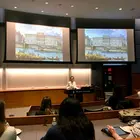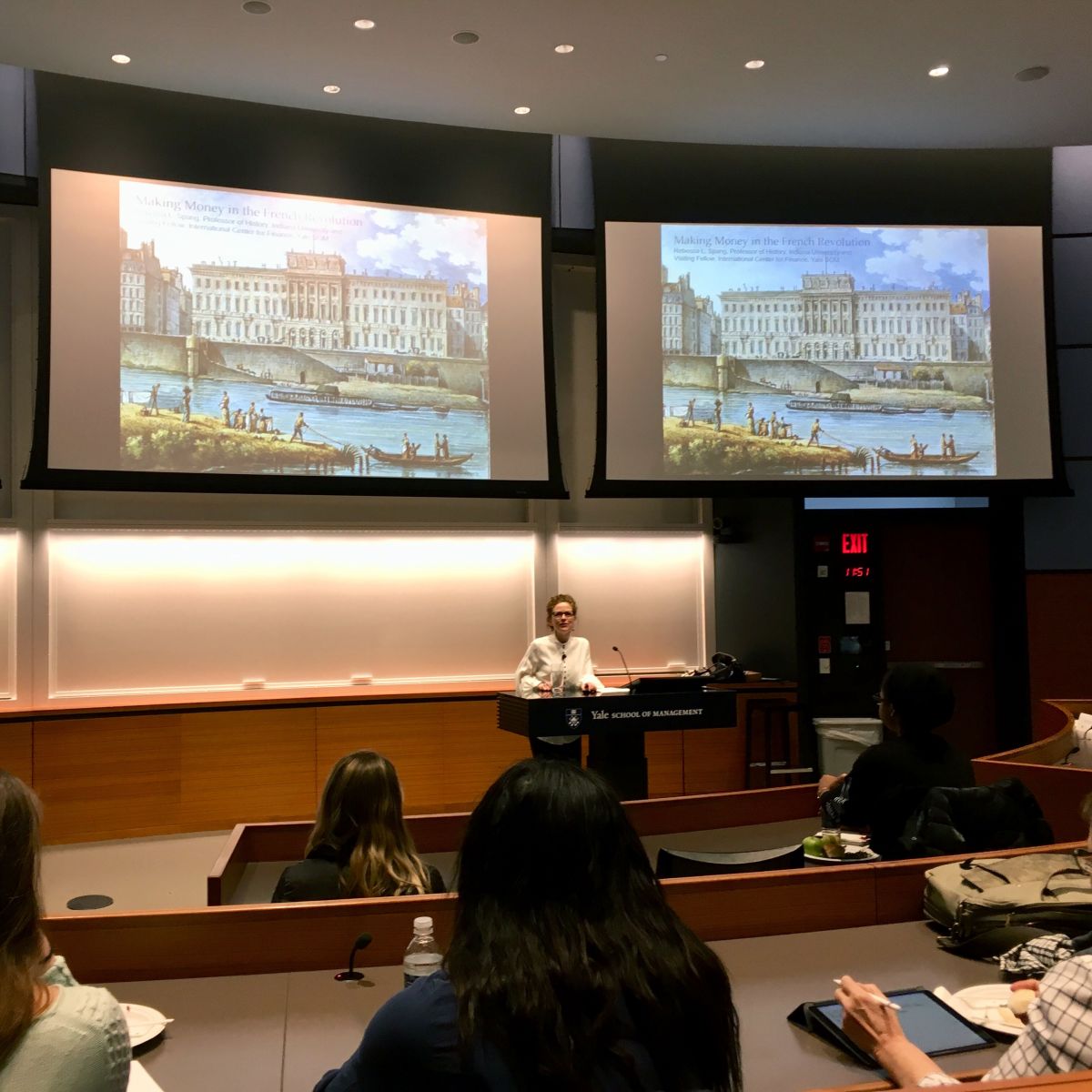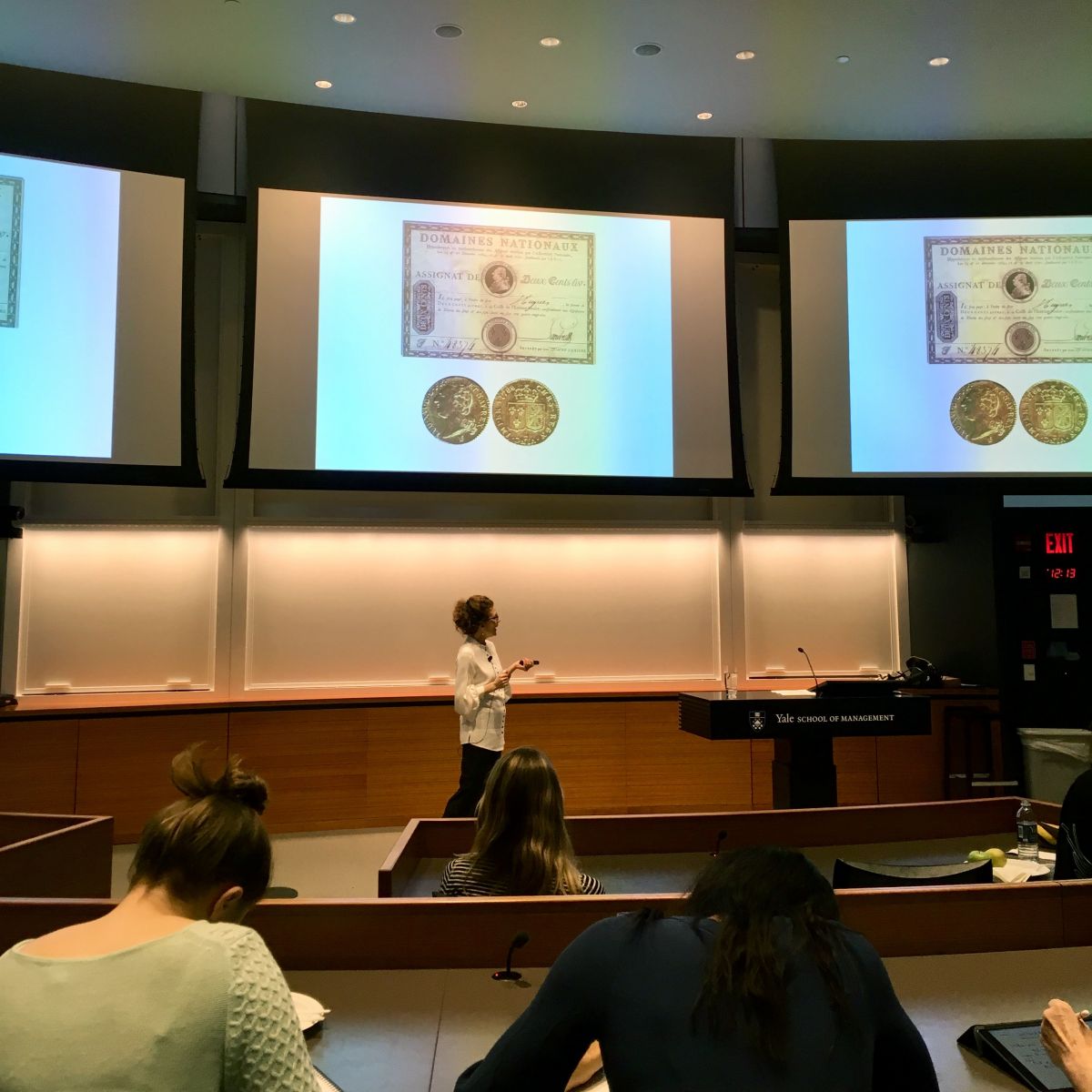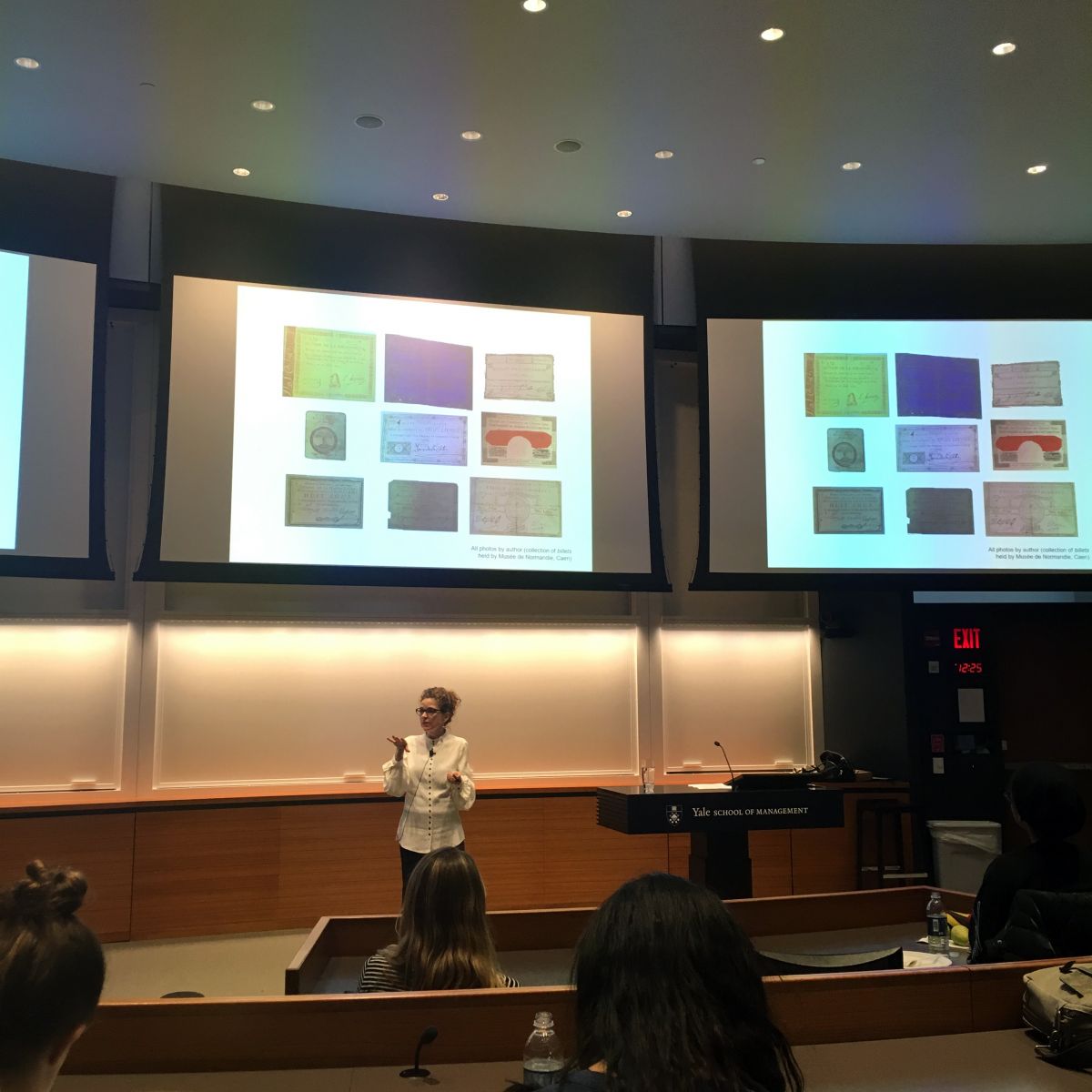
The Evolution of Paper Money During the French Revolution
ICF Visiting Fellow, Rebecca Spang, gave a talk to the SOM Community as part of the Becton Fellowship Program about “Making Money in the French Revolution.” Rebecca is a visiting professor of history and studies eighteenth and nineteenth century European history. She is currently teaching a course at Yale SOM this semester titled, MGT 554: Luxury: From Mortal Sin to Market Sector.
Rebecca’s talk focused on the creation of and logic behind the assignat which was a monetary instrument made of paper and used during the French Revolution. The paper money was to be used as a mediating device during this time. Rebecca detailed everything from how the assignat was created and how it evolved over the years in use and design.
Assignats with lower currency values were circulated at mass quantities but issues arose when local currencies dominated the markets and local shopkeepers would not accept currencies from other French regions. This was particularly an issue when the French military were sent to the boarders to protect the country and their currencies were not accepted locally. Therefore, the French national government tried to end the use of local currencies and implemented an exchange program in which the French could return their local currency and in return receive the nationally accepted currency.
Below are photos from the event:





